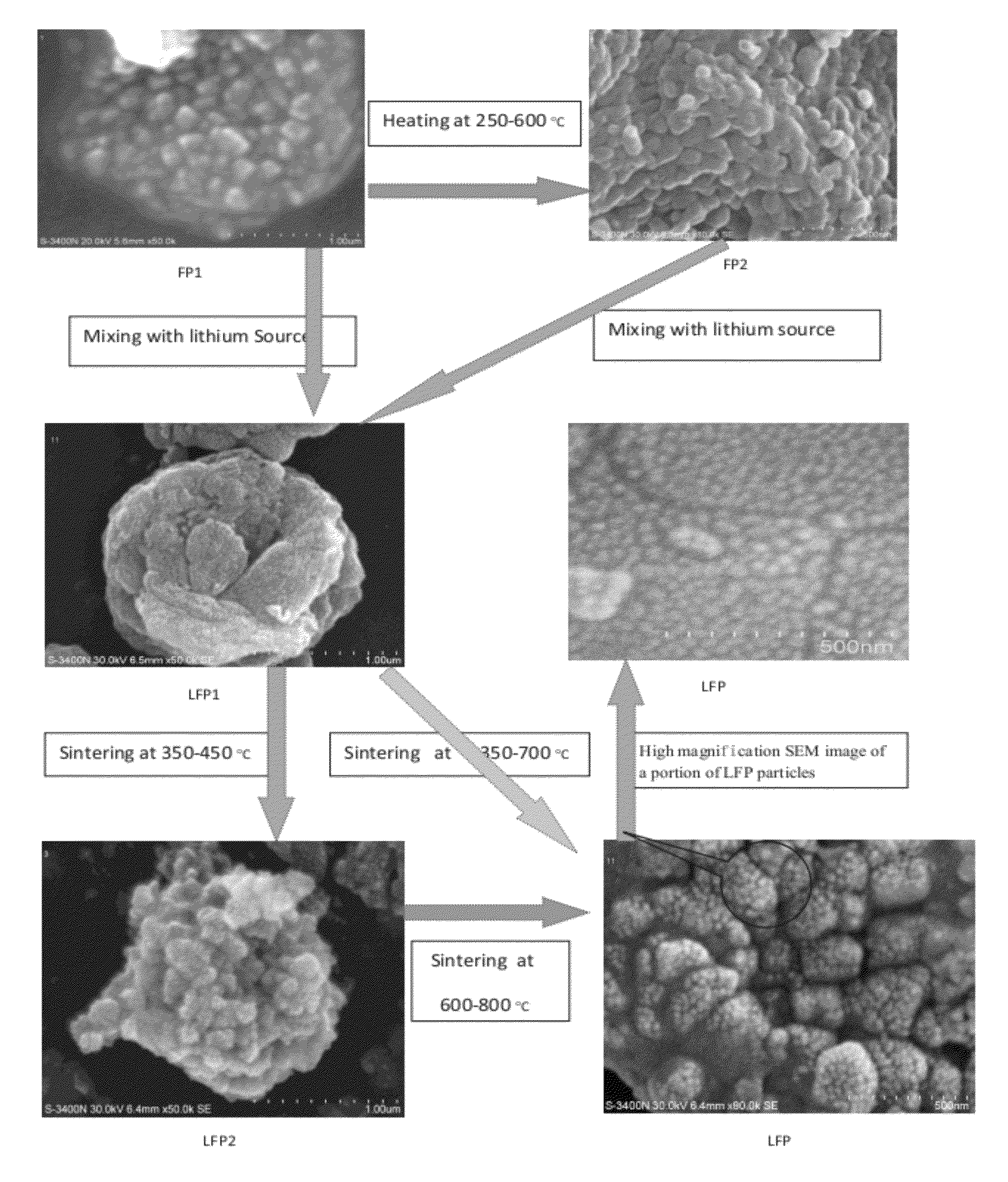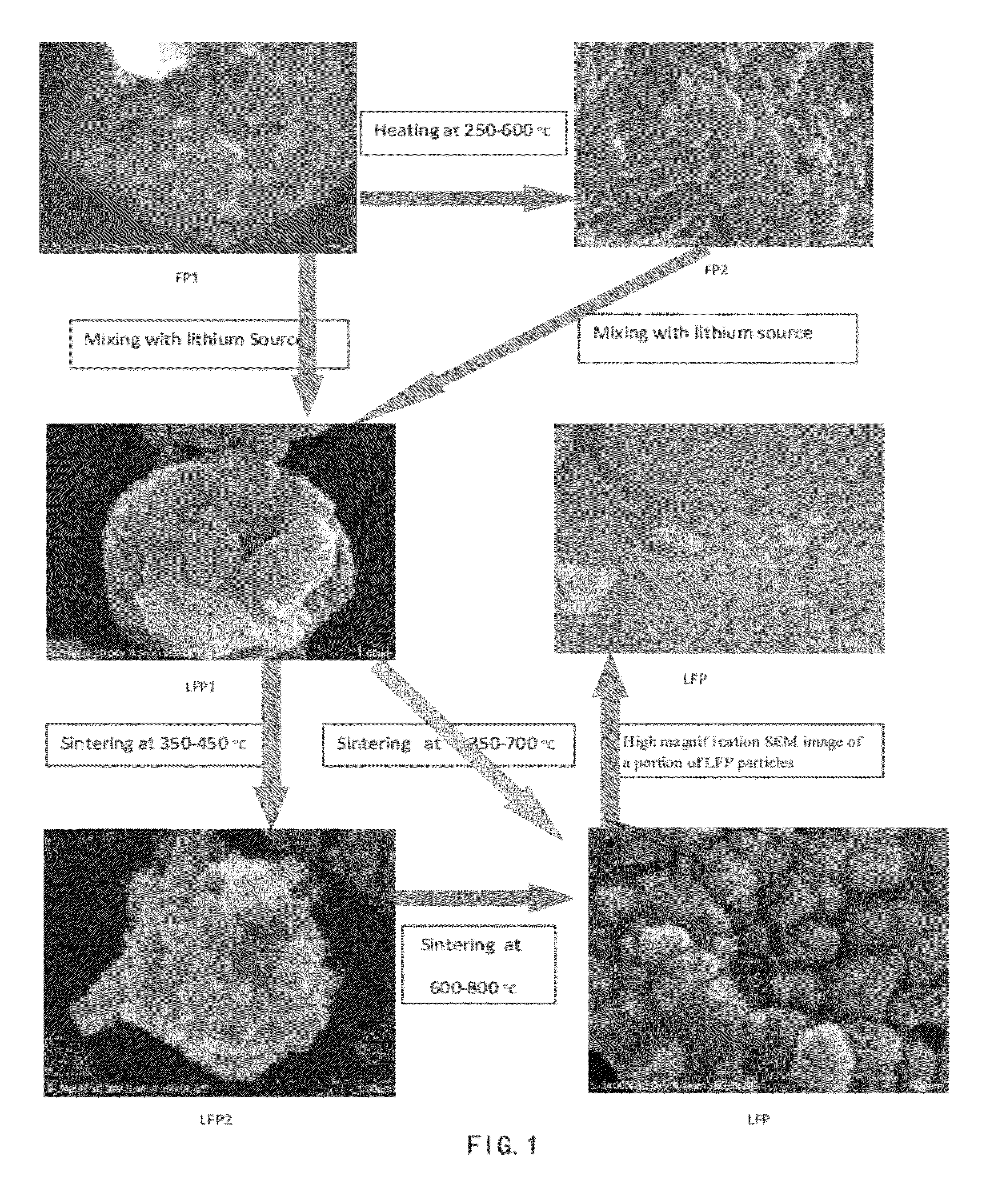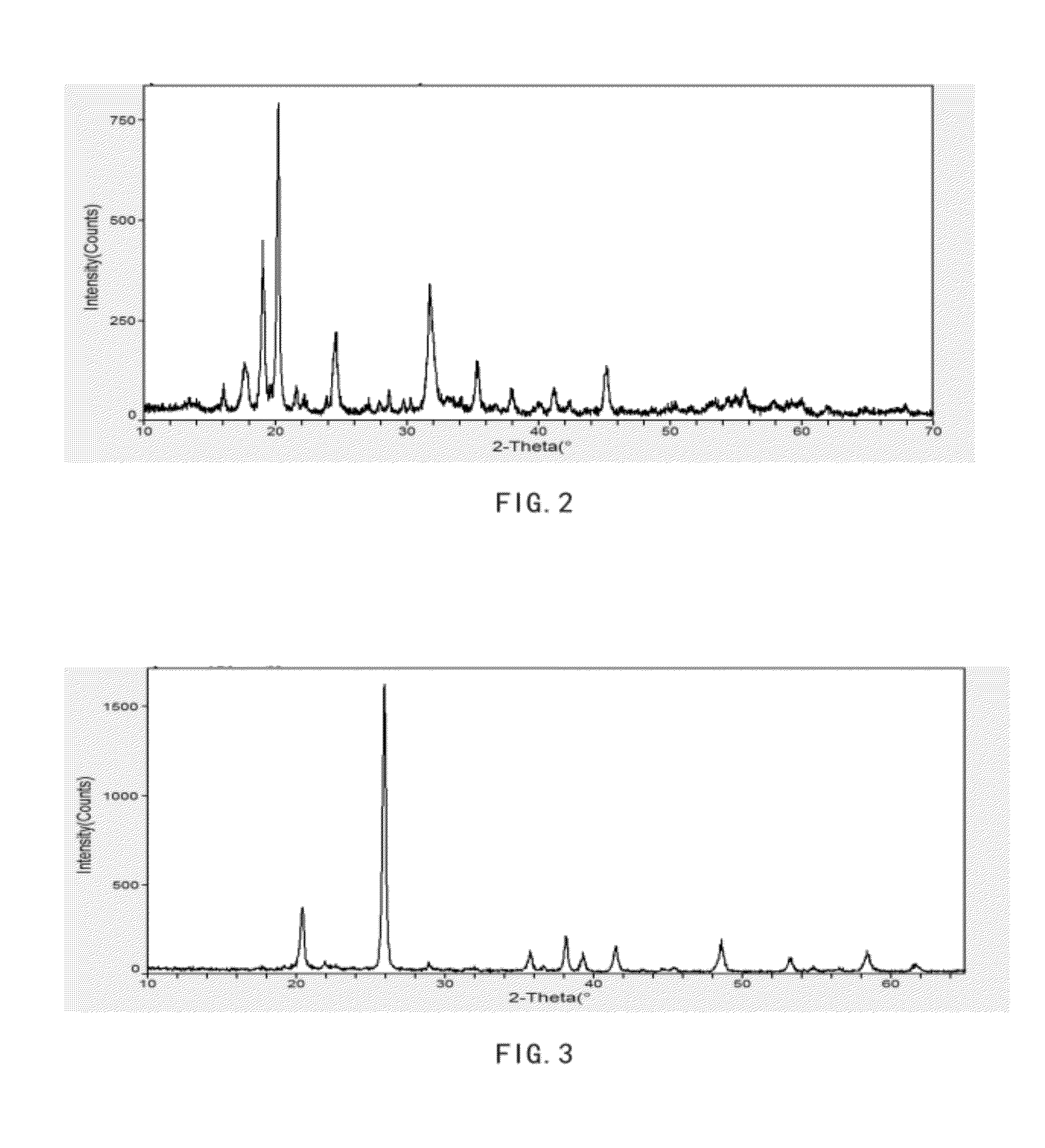HIGH PERFORMANCE CATHODE MATERIAL LiFePO4, ITS PRECURSORS AND METHODS OF MAKING THEREOF
a cathode material and lifepo4 technology, applied in the direction of phosphorus oxyacids, chemistry apparatuses and processes, cell components, etc., can solve the problems of surprisingly ignored electrode materials suppliers and research communities, and achieve the effects of improving electrochemical properties, high discharge rate, and good quality
- Summary
- Abstract
- Description
- Claims
- Application Information
AI Technical Summary
Benefits of technology
Problems solved by technology
Method used
Image
Examples
example 1
[0082]Solution A1: about 139 gram of ferrous sulfate heptahydrate was dissolved in about 500 ml of water; Solution B1: about 55.8 gram of ammonium dihydrogen phosphate was dissolved in about 400 ml of water. Solution B1 was added into Solution A1 with stirring. The 17% H2O2 solution was added to make all ferrous oxidized to ferric, adjusted pH to 2.5 with continued stirring. Suspension and precipitate were heated at 90° C. under stirring for about four hours. The resulting mixture was filtered and thoroughly rinsed with water. The resulting solid material was then dried in an oven at about 104° C. for overnight, and the dry solid material (FP1) was then heated to about 500° C. for about 5 hours to form FP2. The XRD pattern of FP1 and FP2 given in FIGS. 2 and 3 respectively, which indicate a crystalline ferric phosphate dihydrate phase and ferric phosphate anhydrous phase. FIGS. 4A, 4B, 5A, 5B show the FP1 and FP2 comprise micron-size particles packed with submicron nanometer-sized p...
example 2
[0084]Solution A2: about 135 gram of ferric chloride hexahydrate was dissolved in about 700 ml of water; Solution B2: about 57.7 gram 85% phosphoric acid was mixed in about 200 ml of water. Solution B2 was added into Solution A2 with stirring, adjusted pH to about 2.8 with continued stirring. Follow the same steps as Example 1 to make FP1, FP2, LFP1, LFP2, and LFP. The resulting LFP material was used as a cathode material to form a coin cell for electrochemical performance test, and it gave a discharge capacity of about 158 mAh / g at 0.2 C rate.
example 3
[0085]Solution A3: about 1.2 kg 85% phosphoric acid was mixed in about 1 liter of water, about 0.5 kg iron powder was added into Solution A3 with stirring. Continuing stirring until all the iron powder dissolved and all ferrous oxidized to ferric(by oxygen or / and H2O2). Adjusted pH to about 3.0, heated the solution at about 50° C. with continuing stirring for about four hours. The resulting mixture was filtered and thoroughly rinsed with water. The resulting solid material was then dried in an oven at about 104° C. for overnight, to obtain dry solid material FP1.
[0086]The equivalent mole of a lithium compound, LiOH.H2O and FP1 were mixed with cellulose acetate (about 30% of total solid weight per mole FP2) in water at room temperature to form a lithium iron phosphate precursor LFP1 (with Li:Fe:P=1:1:1). The LFP1 was then sintered under argon gas at about 350° C. for about 5 hours then at about 700° C. for about 12 hours to form LFP. The XRD pattern of the sintered product LFP is as ...
PUM
 Login to View More
Login to View More Abstract
Description
Claims
Application Information
 Login to View More
Login to View More - R&D
- Intellectual Property
- Life Sciences
- Materials
- Tech Scout
- Unparalleled Data Quality
- Higher Quality Content
- 60% Fewer Hallucinations
Browse by: Latest US Patents, China's latest patents, Technical Efficacy Thesaurus, Application Domain, Technology Topic, Popular Technical Reports.
© 2025 PatSnap. All rights reserved.Legal|Privacy policy|Modern Slavery Act Transparency Statement|Sitemap|About US| Contact US: help@patsnap.com



